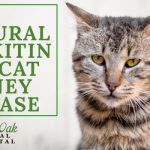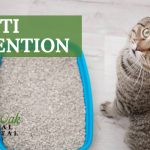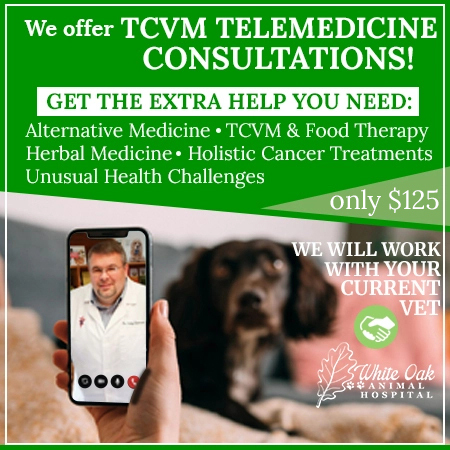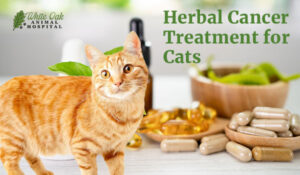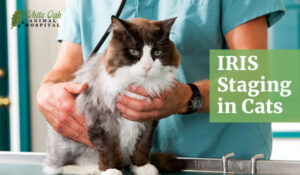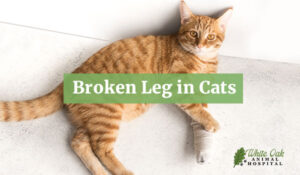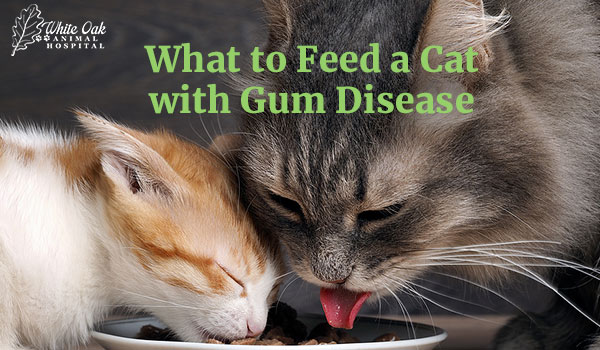
What to feed a cat with gum disease is an essential question for pet owners trying to manage this common issue. Gum disease can cause significant pain, difficulty eating, and even other serious health issues if not properly managed. Fortunately, the proper diet can reduce discomfort and help your cat recover.
This article will look at foods that can help manage your cat’s gum disease and promote better oral health. From soft, easy-to-chew foods to foods with natural healing properties, we will explore the best options for your cat. While diet alone cannot solve gum disease, it can significantly ease the symptoms when used alongside professional care.
If you’re noticing the early signs of gum disease in your cat or looking for ways to maintain their oral health long-term, the dietary suggestions here will support the treatments your veterinarian provides. We will also touch on the role of integrative care, combining Western and alternative therapies, to help manage gum disease in your cat.
What to Feed a Cat with Gum Disease: Soft, Moist Foods to Prevent Pain
When considering what to feed a cat with gum disease, soft, moist foods are essential to the diet. Hard foods can aggravate the pain associated with gum disease, making it harder for your cat to eat. The last thing you want is to cause your cat more discomfort while they struggle with inflammation and tenderness in their gums.
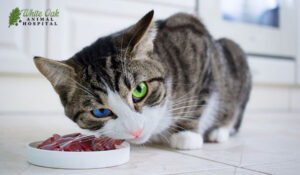 Moist foods, like canned cat food, are easier for your cat to chew, reducing the pain of biting into more complex foods. These foods also contain more moisture, which helps with hydration, which is often overlooked when your cat is dealing with gum disease. Hydration is essential in the healing process, as it supports the overall health of your cat’s body, including the gums.
Moist foods, like canned cat food, are easier for your cat to chew, reducing the pain of biting into more complex foods. These foods also contain more moisture, which helps with hydration, which is often overlooked when your cat is dealing with gum disease. Hydration is essential in the healing process, as it supports the overall health of your cat’s body, including the gums.
Moist foods are also a good source of the nutrients your cat needs without the irritation of dry kibble. Specially formulated oral health foods that contain added ingredients are available and designed to promote gum health. These foods provide the proper nutrients that support healing while being gentle on your cat’s gums.
When considering what to feed a cat with gum disease, avoiding dry, crunchy foods like kibble is essential. Hard foods can cause pain by scraping against the gums, potentially worsening the condition. Wet food helps manage this by offering a soft, easy-to-eat option that doesn’t require much chewing. Many types of moist cat food also provide balanced nutrition that supports your cat’s health while not irritating their gums.
What to Feed a Cat with Gum Disease: Anti-Inflammatory Foods for Faster Healing
 Anti-inflammatory foods can be important when determining what to feed a cat with gum disease. Foods that contain natural anti-inflammatory properties can help to reduce swelling and discomfort, which are common symptoms of gum disease. These foods help to manage the inflammation in the gums and can speed up the healing process.
Anti-inflammatory foods can be important when determining what to feed a cat with gum disease. Foods that contain natural anti-inflammatory properties can help to reduce swelling and discomfort, which are common symptoms of gum disease. These foods help to manage the inflammation in the gums and can speed up the healing process.
Omega-3 fatty acids in fish and some plant-based oils are great for managing inflammation. These fatty acids help reduce the swelling and pain in the gums. Adding omega-3-rich foods to your cat’s diet may help soothe their discomfort while promoting overall gum health. Omega-3s also reduce the formation of harmful plaque, which can worsen gum disease.
In addition to omega-3s, turmeric, and ginger are natural anti-inflammatory foods that can help with gum disease. These ingredients contain compounds that work to calm the inflammation in the gums, easing pain and discomfort. While these ingredients may not wholly resolve gum disease, they can play a significant role in helping to manage the symptoms and speed recovery.
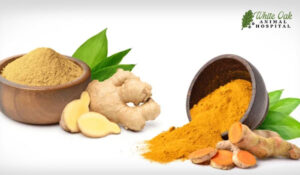 Including antioxidants-rich foods is another way to reduce inflammation and support healing in your cat’s gums. Antioxidants help to protect the gum tissues from further damage and support the body’s healing process. Ingredients like blueberries, spinach, and other antioxidant-rich foods can be a great addition to your cat’s diet.
Including antioxidants-rich foods is another way to reduce inflammation and support healing in your cat’s gums. Antioxidants help to protect the gum tissues from further damage and support the body’s healing process. Ingredients like blueberries, spinach, and other antioxidant-rich foods can be a great addition to your cat’s diet.
When thinking about what to feed a cat with gum disease, consider adding these anti-inflammatory foods to their meals. Omega-3 fatty acids, turmeric, ginger, and antioxidants can all help reduce swelling and speed healing in your cat’s gums, improving their oral health.
What to Feed a Cat with Gum Disease: Integrating Western and Holistic Care
When it comes to what to feed a cat with gum disease, integrating both Western and holistic approaches provides the most effective solution. Western medicine offers effective treatments for gum disease, but combining it with holistic therapies like Traditional Chinese Veterinary Medicine (TCVM) can provide a more complete treatment plan.
Western treatments, such as professional cleanings and prescribed medications, target the immediate symptoms of gum disease, but they do not always address the underlying issues, such as inflammation or pain. This is where holistic approaches like acupuncture, herbal medicine, and food therapy come into play. Acupuncture is known for reducing inflammation and improving circulation to the gums. It is a non-invasive treatment that can help manage pain and promote healing.
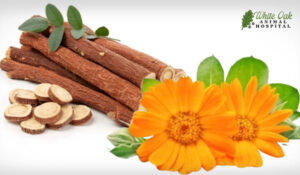 Herbal treatments, such as calendula and licorice root, can support gum health by reducing inflammation and promoting tissue repair. These herbs can be used with Western treatments to provide a more comprehensive approach to managing gum disease. At White Oak Animal Hospital, we create customized care plans that combine the best of both Western and holistic treatments.
Herbal treatments, such as calendula and licorice root, can support gum health by reducing inflammation and promoting tissue repair. These herbs can be used with Western treatments to provide a more comprehensive approach to managing gum disease. At White Oak Animal Hospital, we create customized care plans that combine the best of both Western and holistic treatments.
Food therapy is another part of integrative care. In traditional Chinese veterinary medicine, food is an essential tool for treating illness. Specially selected foods can support your cat’s gum health and help to reduce inflammation. When combined with acupuncture and herbs, food therapy can enhance the effectiveness of treatment and speed up recovery.
White Oak Animal Hospital also offers telemedicine consultations, which allow us to monitor your cat’s progress and adjust their treatment plan as needed. This flexibility ensures that you can always follow up with your cat’s care plan, even if you cannot visit the clinic in person.
When dealing with a cat suffering from gum disease, focusing on more than just diet is essential. A comprehensive treatment plan, including dietary changes, professional veterinary care, and integrative therapies, will produce the best results. At White Oak Animal Hospital, we offer a unique approach that combines Western medicine with the healing power of Traditional Chinese Veterinary Medicine (TCVM), acupuncture, and herbal treatments.
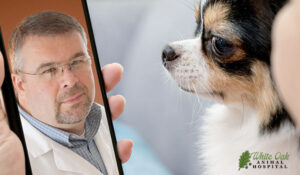 With over 28 years of experience, our team is fully equipped to help your cat recover. Whether you’re looking for a personalized care plan or exploring integrative treatment options, we are here to guide you. We also offer telemedicine consultations, which allow us to provide continuous care and adjust your cat’s treatment plan remotely.
With over 28 years of experience, our team is fully equipped to help your cat recover. Whether you’re looking for a personalized care plan or exploring integrative treatment options, we are here to guide you. We also offer telemedicine consultations, which allow us to provide continuous care and adjust your cat’s treatment plan remotely.
If you’re searching for an integrative approach to treating your cat’s gum disease, White Oak Animal Hospital is here to help. Contact us today to discuss the best dietary and treatment options for your cat’s health.
Frequently Asked Questions
Can gum disease in cats be reversed by changing their diet?
Diet alone cannot completely reverse gum disease in cats, but it plays an important role in managing the symptoms. The right foods can help reduce inflammation and pain, while preventing the condition from worsening. Combining dietary changes with professional veterinary care is the most effective approach.
Are there any specific foods I should avoid when my cat has gum disease?
Yes, avoid hard or crunchy foods that can further irritate your cat’s gums. Foods high in sugar or fillers should also be avoided as they can contribute to plaque buildup. Opt for soft, high-quality wet food that promotes oral health and doesn’t contain unnecessary additives.
Can acupuncture help treat gum disease in cats?
Yes, acupuncture can help reduce pain, alleviate inflammation, and improve blood circulation to the gums, which can speed up healing. Acupuncture works well when combined with dietary changes and other holistic treatments like herbal therapies.
What role do herbs play in treating gum disease in cats?
Herbs like calendula, licorice root, and chamomile are used for their anti-inflammatory properties. These herbs can help soothe gum tissues and promote healing, making them a helpful addition to your cat’s treatment plan when used under the guidance of a veterinarian.
How can telemedicine consultations help with my cat’s gum disease treatment?
Telemedicine consultations offer convenience, allowing you to discuss your cat’s condition and treatment plan remotely. This is particularly useful for follow-up appointments and for adjusting your cat’s care plan without the need for frequent in-person visits.
Related Posts
-
Why Try All Natural Epakitin For Cat Kidney Disease?
Cat kidney disease is a common ailment in older cats. For example, common causes of…
-
Easy Cat UTI Prevention
Cat UTI prevention is simple once you understand the root cause. Your veterinarian can help…
-
Facts About Cat Kidney Failure
If your pet experiences any symptoms of cat kidney failure, immediately take them to your…
-
Eastern and Western Cat Cancer Treatments
As cats age, they often get lumps and bumps.In veterinary medicine, these are called masses…

